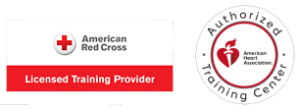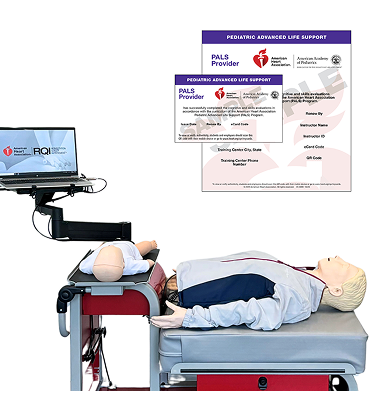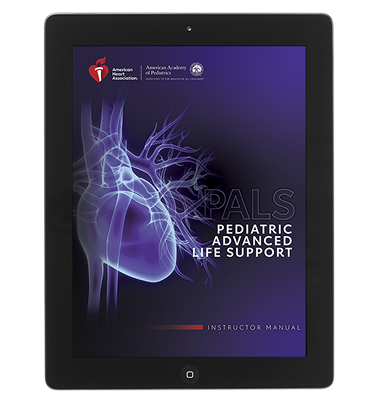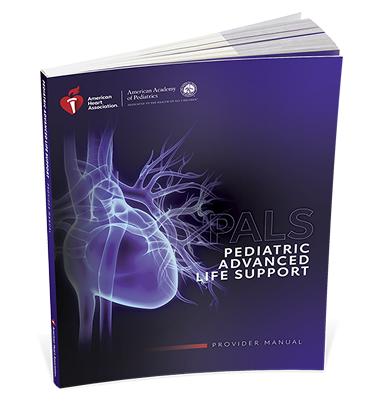UPDATED PALS COURSE View All Page Details
Pediatric Advanced Life Support Courses
Both the AHA and Red Cross PALS courses aim to improve outcomes for pediatric patients by preparing healthcare providers to effectively recognize and intervene in patients with respiratory emergencies, shock, and cardiopulmonary arrest by using high‐performance team dynamics and high‐quality individual skills.



Pediatric Advanced Life Support (PALS) Course Options
PALS Online & Skills with Station

4-6 Hours

Online + In Person Skills

2-Year AHA Certification
$249
PALS Blended
The PALS Course is designed for healthcare providers who respond to emergencies in infants and children and for personnel in emergency response, emergency medicine, intensive care and critical care units

4-6 Hours

Blended Learning

2-Year AHA Certification
$239
PALS Classroom

10-12 Hours

Instructor Led

2-Year AHA Certification
$159
PALS Course Options
Course Fee: $159
Course Content
- Perform high‐quality cardiopulmonary resuscitation (CPR) per American Heart Association (AHA) basic life support (BLS) recommendations
- Differentiate between patients who do and do not require immediate intervention
- Recognize cardiopulmonary arrest early and begin CPR within 10 seconds
- Differentiate between respiratory distress and failure
- Perform early interventions for respiratory distress and failure
- Differentiate between compensated and decompensated (hypotensive) shock
- Perform early interventions for the treatment of shock
- Differentiate between unstable and stable patients with arrhythmias
- Describe clinical characteristics of instability in patients with arrhythmias
- Implement post-cardiac arrest management
- Apply team dynamics
Course Fee: $239
Course Content
- Perform high‐quality cardiopulmonary resuscitation (CPR) per American Heart Association (AHA) basic life support (BLS) recommendations
- Differentiate between patients who do and do not require immediate intervention
- Recognize cardiopulmonary arrest early and begin CPR within 10 seconds
- Differentiate between respiratory distress and failure
- Perform early interventions for respiratory distress and failure
- Differentiate between compensated and decompensated (hypotensive) shock
- Perform early interventions for the treatment of shock
- Differentiate between unstable and stable patients with arrhythmias
- Describe clinical characteristics of instability in patients with arrhythmias
- Implement post-cardiac arrest management
- Apply team dynamics
Course Fee: $249
Course Content
- Perform high‐quality cardiopulmonary resuscitation (CPR) per American Heart Association (AHA) basic life support (BLS) recommendations
- Differentiate between patients who do and do not require immediate intervention
- Recognize cardiopulmonary arrest early and begin CPR within 10 seconds
- Differentiate between respiratory distress and failure
- Perform early interventions for respiratory distress and failure
- Differentiate between compensated and decompensated (hypotensive) shock
- Perform early interventions for the treatment of shock
- Differentiate between unstable and stable patients with arrhythmias
- Describe clinical characteristics of instability in patients with arrhythmias
- Implement post-cardiac arrest management
- Apply team dynamics
Course Locations

Superior Life Support HQ
25261 Avenue Tibbitts, Santa Clarita, CA 91355

(661) 607-0344

contact@superiorlifesupport.com

Superior Life Support HQ
25261 Avenue Tibbitts, Santa Clarita, CA 91355

(661) 607-0344

contact@superiorlifesupport.com

Superior Life Support HQ
25261 Avenue Tibbitts, Santa Clarita, CA 91355

(661) 607-0344

contact@superiorlifesupport.com

Related Courses

Basic Life Support (BLS) Course

3 Learning Formats

CE credit

Advanced Cardiovascular Life Support (ACLS) Course

3 Learning Formats

CE credit
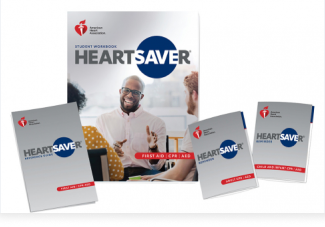
Heartsaver First Aid, CPR, AED Course

3 Learning Formats

CE credit
Need to renew your existing certification?


